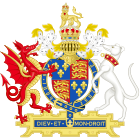Vagabonds Act 1547 facts for kids
| Act of Parliament | |

|
|
| Long title | An Act for the punishment of Vagabonds, and for the Relief of the poor and ... Persons. |
|---|---|
| Citation | 1 Edw. 6. c. 3 |
| Territorial extent | |
| Text of statute as originally enacted | |
The Vagabonds Act 1547 was an important law in England. It was also known as the Vagrancy Act. King Edward VI and his main advisor, Edward Seymour, created this law.
This act tried to deal with people who were poor and had no home or job. It had two main parts. One part was about helping poor people in their local areas. The other part was about how to treat people called "vagabonds."
Contents
What Was a Vagabond?
In the 1500s, a vagabond was someone who wandered around without a fixed home or job. Many people at that time struggled to find work. They might travel from town to town looking for ways to earn money. The government saw these people as a problem.
How the Act Tried to Help the Poor
The law continued a system that was already in place. It made sure that local churches, called parishes, collected money every week. This money was meant to help people who were truly poor and needed support. This part of the act was about offering some relief to those in need.
The Harsh Rules for Vagabonds
The act had very strict rules for vagabonds. If someone was found to be a vagabond, they could be forced to work for others without pay. This forced labor could last for two years. During this time, they were given only basic food and drink, like bread and water.
People who were forced to work could also be bought and sold by their masters. This meant they could be moved from one master to another. If no private person wanted them, they were sent back to the town where they were born. There, they were made to work for the whole community.
What Happened to Children?
The act also had rules for children who were vagabonds. Boys could be taken as "apprentices" until they were 24 years old. Girls could be taken until they were 20 years old. An apprentice usually learns a trade, but in this case, it was a form of forced work.
If a child tried to run away from this apprenticeship, they faced even harsher rules. They could be forced to work for the rest of their apprenticeship time.
Why the Act Didn't Last
The Vagabonds Act of 1547 was very harsh. Many people thought it was too cruel. Because of this, it did not last long. The law was removed in 1550. A different law, the Vagabonds Act 1530, was put back in its place.
See also
- Vagabonds Act

